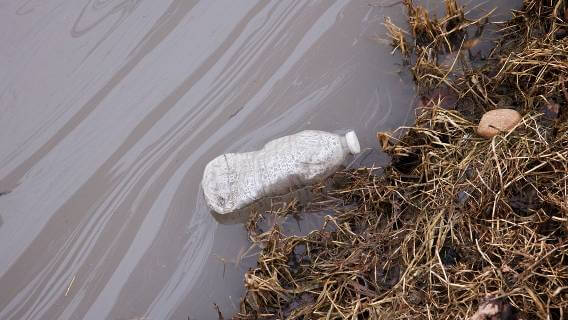Scientists Fight Toxic Forever Chemicals With Innovative Solutions
Editors carefully fact-check all Drugwatch.com content for accuracy and quality.
Drugwatch.com has a stringent fact-checking process. It starts with our strict sourcing guidelines.
We only gather information from credible sources. This includes peer-reviewed medical journals, reputable media outlets, government reports, court records and interviews with qualified experts.

Harnessing the power of chemical bond-breaking bacteria and becoming detection experts are two ways U.S. scientists are hoping to reduce the damage of toxic forever chemicals.
At the Claros Technologies lab in Minneapolis, researchers are working to detect and then destroy microscopic PFAS chemicals without causing secondary problems. So far, the lab can analyze 47 of the roughly 15,000 chemicals and destroy them.
“We became PFAS detection experts so that we could become destruction experts,” John Brockgreitens, vice president of research and development for Claros Technologies, told CBS News. “At Claros we have the tagline: ‘We solve problems without creating new ones.’ If we mess up, people get this in their water, and this is something we take extremely seriously.”
University of California’s Microbial Solution
On the West Coast, researchers at the University of California, Riverside have harnessed the power of two chemical-bond-breaking bacteria that have the power to remediate a specific subgroup of per- and polyfluoroalkyl substances that contain one or more chlorine atoms in their chemical structure.
“What we discovered is that bacteria can do carbon-chlorine bond cleavage first, generating unstable intermediates,” Assistant Professor Yulie Men told UC Riverside News. “And then those unstable intermediates undergo spontaneous defluorination, which is the cleavage of the carbon-fluorine bond.”
The scientists are using two bacteria species – Desulfovibrio aminophilus and Sporomusa sphaeroides – that are naturally occurring and known to live in subterranean microbiomes where groundwater could be contaminated with potentially carcinogenic PFAS.
Microbes have been used in the biological cleanup of oil spills and other industrial pollutants, but the use of microorganisms to clean up PFAS is still in its infancy, Men told SciTechDaily.
Race to Eliminate PFAS
The race is on to begin cleaning up the pervasive toxins. PFAS are synthetic chemicals that are dangerous to human health and can accumulate in the body. They do not break down easily in the environment, which earned them the nickname “forever chemicals.”
PFAS are found virtually everywhere, in products from water-repellent clothing to nonstick cookware, and research has linked high levels of PFAS exposure with health issues such as cancer and immune system dysfunction. Certain types of fish also contain high levels of PFAS.
In March, the U.S. Environmental Protection Agency announced it would soon be regulating six PFAS in American drinking water. The National Primary Drinking Water Regulations will be updated to include the six forever chemicals.
Once the regulations are officially adopted, utility companies will be tasked with monitoring and treating water to reduce those specific PFAS levels and also notifying consumers if levels exceed the proposed regulatory standards.
In June, the U.S. Geological Survey found that nearly half of the American drinking water supply could be contaminated with PFAS. The scientists in Minnesota want to take their technology and scale it up to help combat the issues.
“What if you can keep these compounds in use for critical applications but you can ensure that they never leave the facilities? We permanently solve the problem,” Michelle Bellanca, CEO and co-founder of Claros Technologies, told CBS News.
Ongoing Health and Legal Concerns
Almost everyone has come into contact with forever chemicals through water, food or consumer products. For some, the exposure to PFAS has already proved problematic. Thousands of PFAS lawsuits have been filed over potential links between the chemicals and illnesses such as ADHD and Type 2 diabetes.
The chemicals are also found in aqueous film forming foams used to fight fires and in training exercises. This foam is at the center of hundreds of AFFF lawsuits.
A recent Harvard study showed higher levels of forever chemicals in drinking water near military bases. PFAS and other chemicals contaminated the water at Marine Corps Base Camp Lejeune in North Carolina, leading to a greater risk of Parkinson’s disease for those stationed there, according to a study published in May in the Journal of the American Medical Association.
States have sued chemical companies like 3M and Dupont, seeking cleanup and remediation. Individuals have filed personal injury claims.


